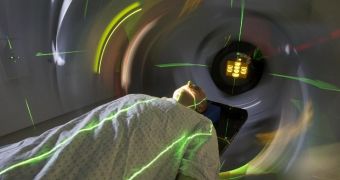According to a recent investigation whose findings are detailed in the International Journal of Low Radiation, certain compounds derived from plants might help cancer patients better cope with the effects of radiotherapy.
For those unaware, radiotherapy, also known as radiation therapy or radiation oncology, boils down to exposing individuals diagnosed with cancer to gamma rays or X-rays. The resulting radiation helps destroy cancer cells.
Specifically, the rays serve to damage cancer cells to such an extent that they are no longer able to repair themselves. In doing so, this form of cancer treatment boosts survival chances, specialists explain.
The problem is that, while busy making mincemeat of cancer cells, radiotherapy also takes its toll on healthy tissues in the patient's body. As shown by previous investigations, the tissues that make up the skin are the ones hit the hardest.
This damage that radiation therapy can inflict to skin tissues can sometimes lead to hair loss. Dermatological problems and skin cancer are side effects that have until now been linked to the use of radiation to treat cancer.
Evidence at hand indicates that three compounds derived from plants, i.e. affeic acid (CA), rosmarinic acid (RA) and trans-cinnamic acid (TCA), could help protect a patient's skin during radiation therapy sessions, EurekAlert informs.
Is this is indeed the case, the three compounds could serve to fight back said side effect of radiotherapy before things get from bad to worse. However, it is important that CA, RA, and TCA are administered in non-toxic concentrations.
As detailed in the International Journal of Low Radiation, CA, RA, and TCA are basically organic, antioxidant compounds. Their ability to protect the skin against damage caused by radiation therapy has until now only been tested in laboratory conditions.
The compounds are said to not only be able to reduce levels of reactive oxygen species, i.e. chemically reactive molecules that contain oxygen and that can damage cells structures, but to also work by limiting damage to genetic material.
Specifically, CA, RA, and TCA appear to be well capable of limiting the effects of radiation therapy on skin tissues by 40%, 20%, and 15% respectively. The compounds likely do so by enhancing the efficiency of natural DNA repair mechanisms and by deactivating reactive oxygen species.
The scientists behind this research project plan to further investigate these compounds, and hope to soon determine whether a combination of CA, RA, and TCA could limit the effects of radiotherapy to a greater extent than each of these compounds alone.

 14 DAY TRIAL //
14 DAY TRIAL //